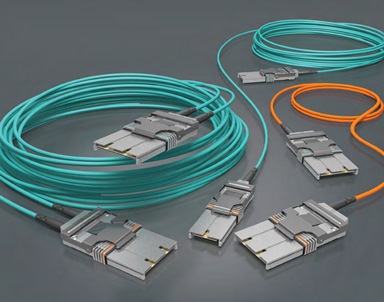
XIMEA offers a range of PCIe accessories - Gen2 and Gen3.
If you want to acquire some specific cables by yourself, below are some suggestions.
Note: XIMEA does not guarantee functionality - listed products are for information only.
IOI Copper Cables (0.5, 1.0, 1.5, 2.0, 3.0, 4.0m):
Example
Molex Copper Cables (0.5m up to 7m):
Example
Dolphin Fiber Optic Cables (from 10m up to 100m):
Example
Samtec Fiber Optic Cables (from 10m up to 300m):
Datasheet
Many applications, especially in Machine Vision, require long length cables to allow remote distance connection of the camera to the host PC.
Because PCI Express is a standard interface there is a wide variety of products present on the market and more are being added.
Here is a short overview of options to understand the benefits and differences between main ways to connect the PCIe camera.
The important part for any of these is that a Frame grabber or special software is NOT needed, which makes them cost-effective and minimizes the complexity and footprint of the overall system.
These cables are most common and most used at the moment.
You can find them in a wide selection of lengths or even colors.
While being the cheapest solution they are typically restricted in length - up to 7 meters.
Be careful in choosing passive cables over 3m, they can be more bulky.
The main reason in such limitation is that copper cable exhibits signal loss over longer distances.
Other conditions that influence the signal are for example material choice, cable design, vendor overall quality or connectors.
Cost: Low
Above 10 meters you should look for fiber-based solutions which can provide a reach of up to 100 or even 300 meters.
Fiber extenders have two transceivers that help to convert the optical signal into electrical and back.
These transceivers connect to each other with fiber cable instead of copper and transmit signal by the means of light, not electrical signal.
Such cables can transport up to 64 Gbit per second of data over very long distances.
Cost: high
With PCIe being the standard interface for PC many new features and options arise also from the accessories vendors.
XIMEA is always trying to support or implement as many variations as possible for the customers to choose from.
At the moment we added to the offer a selection of cables that can be connected to various Switches or Adapters - more about it in part 4.
These are ideal for applications with space constraints like in case of embedded solutions or tight enclosures.
Cost: Medium
If you need to connect multiple cameras with various sensors or interfaces to single host these come into the equation.
These are special Adapters and Switches that are especially useful in cases where applications require excessive variation combined with speed.
Such camera combos/hubs can be especially suitable for VR and AR (Virtual and Augmented reality) or 360 panoramas due to their small size.
You can have many flexible parts connected together and just a single cable (besides the power) coming out and transferring data through DMA (Direct memory access) into PC memory. Plus there is an ongoing designing of a variety of cables and adapters/switches.
Cost: high